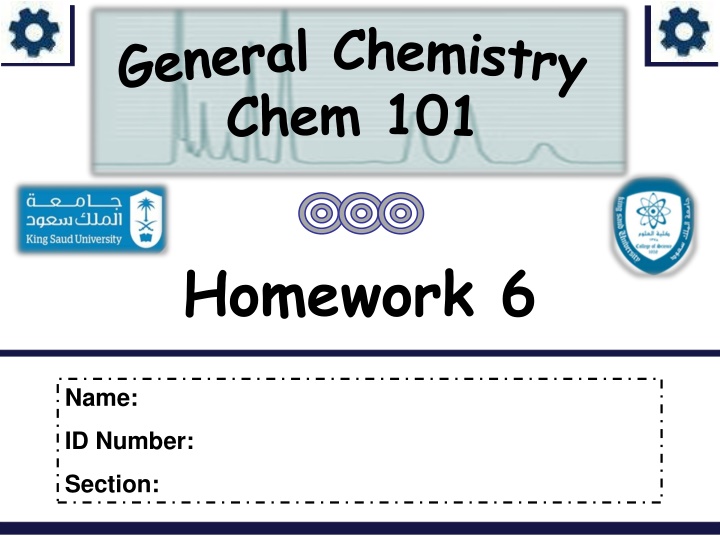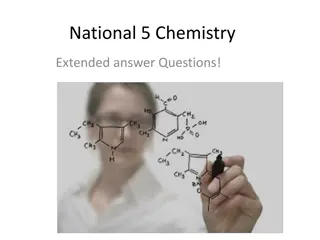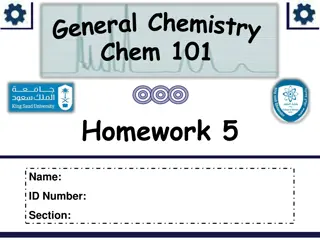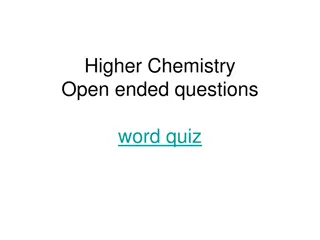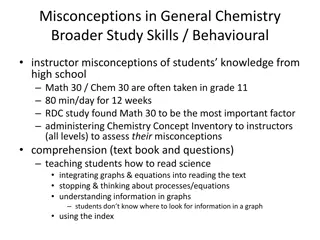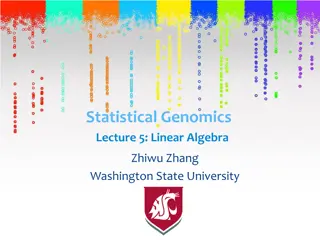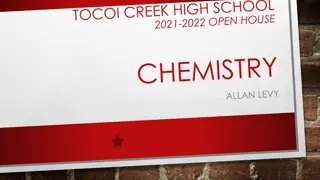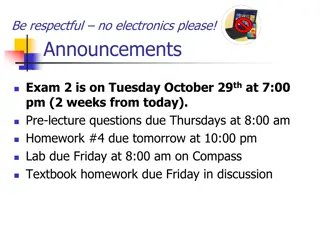General Chemistry Homework Questions
Solve quantum number problems, determine total orbitals, electron configurations, isoelectronic series, atomic radius order, and ionization energies in this set of General Chemistry questions.
Download Presentation

Please find below an Image/Link to download the presentation.
The content on the website is provided AS IS for your information and personal use only. It may not be sold, licensed, or shared on other websites without obtaining consent from the author.If you encounter any issues during the download, it is possible that the publisher has removed the file from their server.
You are allowed to download the files provided on this website for personal or commercial use, subject to the condition that they are used lawfully. All files are the property of their respective owners.
The content on the website is provided AS IS for your information and personal use only. It may not be sold, licensed, or shared on other websites without obtaining consent from the author.
E N D
Presentation Transcript
General Chemistry Chem 101 Homework 6 Name: ID Number: Section:
Question 1 Give the values of the quantum numbers associated with the orbitals in the 4dsubshell.
Question 2 What is the total number of orbitals associated with the principal quantum number n = 5?
Question 3 Calculate the total number of electrons that can be present in the principal level for which n = 4.
Question 4 Write the ground-state electron configurations for (a) sulfur (S) (b) palladium (Pd)
Question 5 Which of the following is an isoelectronic series? (a) F-, Cl-, Br-, I- (b) S, Cl, Ar, K (c) Si2-, P2-, S2-, Cl2- (d) O2-, F-, Ne, Na+
Question 6 Arrange the following atoms in order of decreasing radius: F, O, S, Ba, Mg
Question 7 Of the choices below, which gives the order for first ionization energies? (a) Kr > Br > Se > Ge > Ga (b) Br > Se > Ga > Kr > Ge (c) Ga > Br > Ge > Kr > Se (d) Kr > Se > Br > Ga > Ge (e) Ga > Ge > Se > Br > Kr
Question 8 The electron configuration of the atom with the most negative electron affinity is (a) 1s2 2s2 2p6 3s1 (b) 1s2 2s2 2p6 3s2 (c) 1s2 2s2 2p6 3s2 3p1 (d) 1s2 2s2 2p6 3s2 3p4 (e) 1s2 2s2 2p6 3s2 3p5
